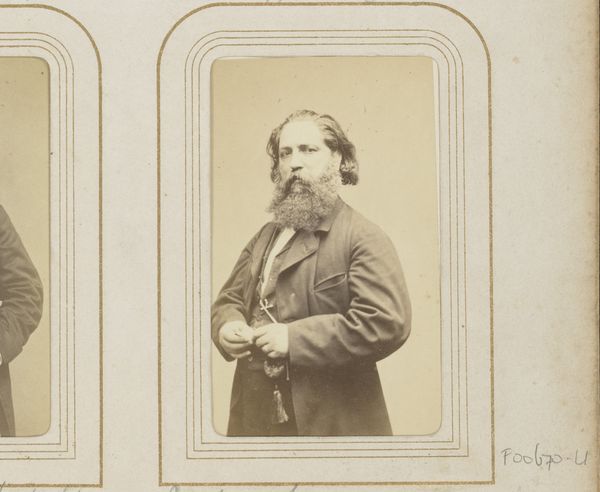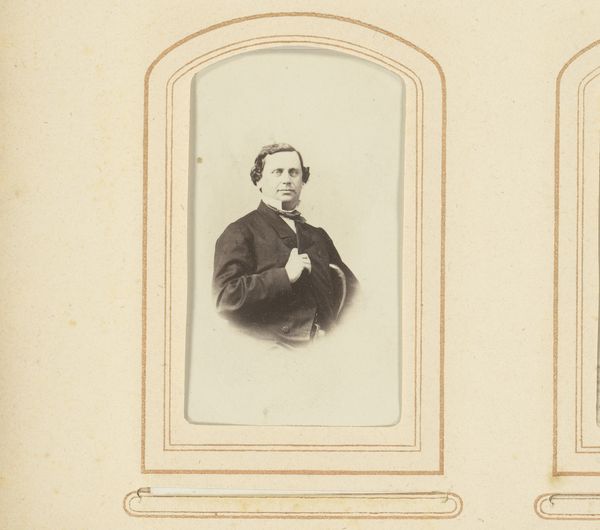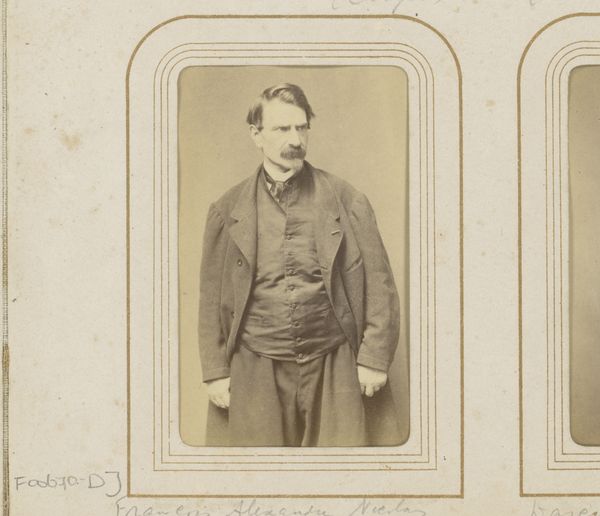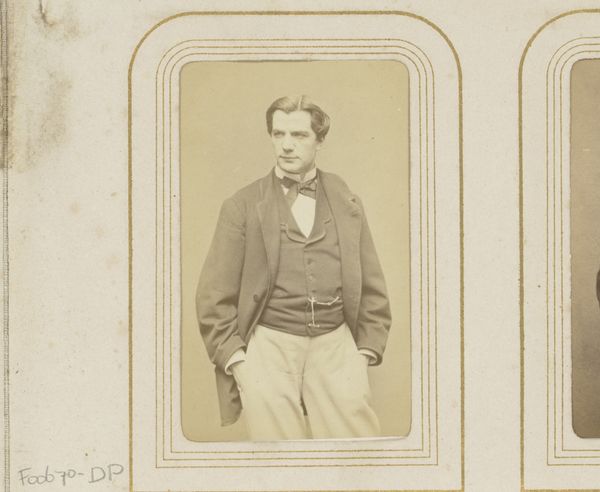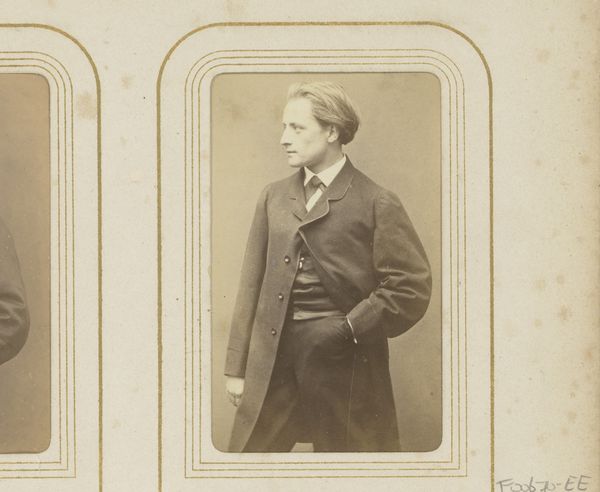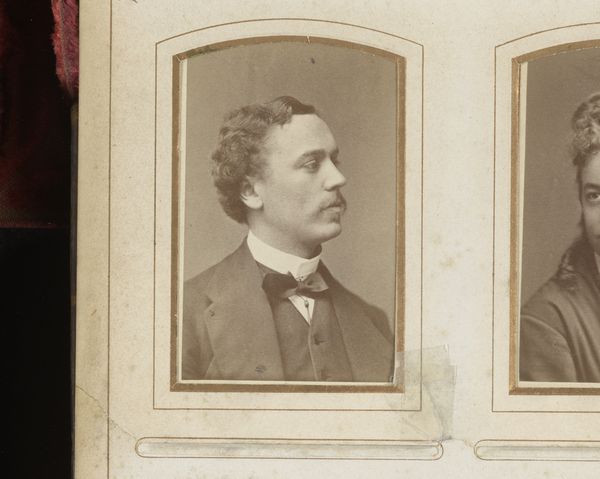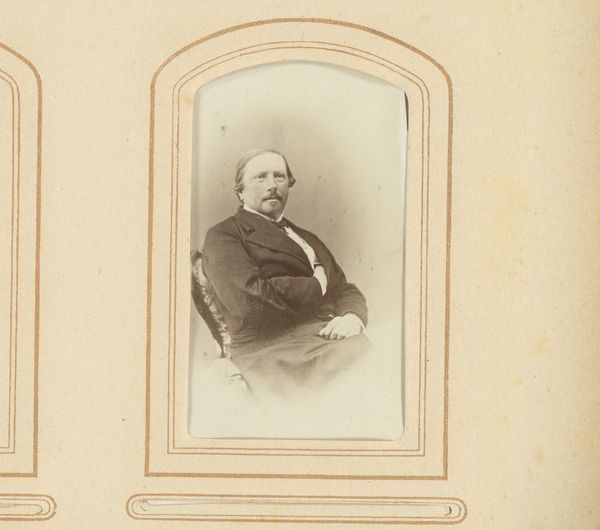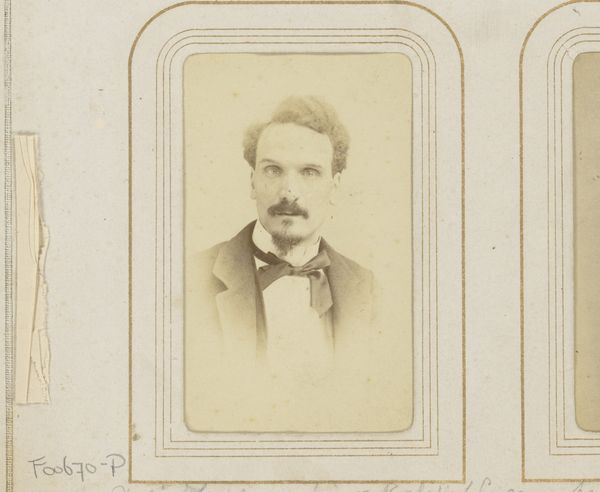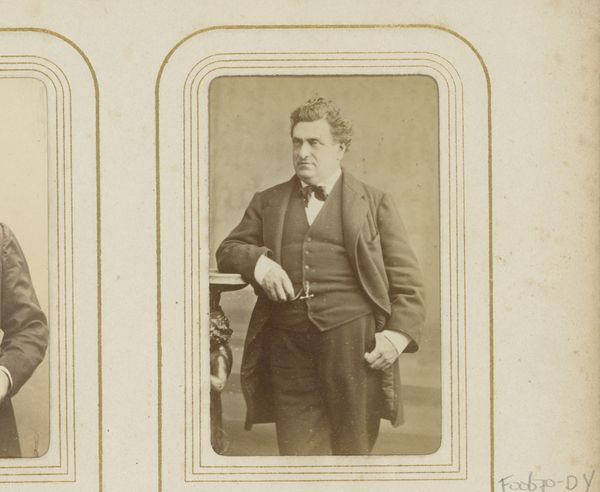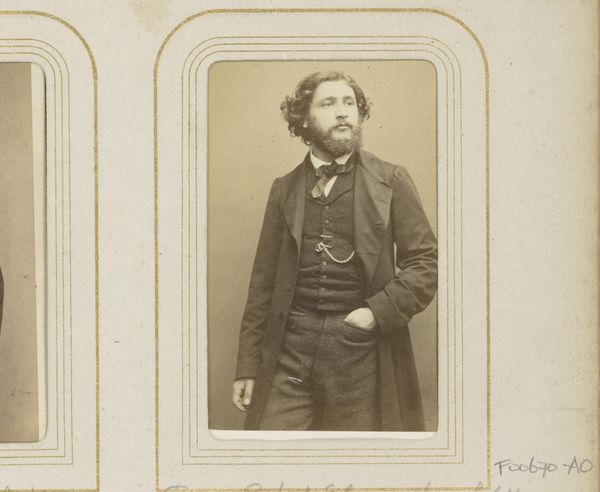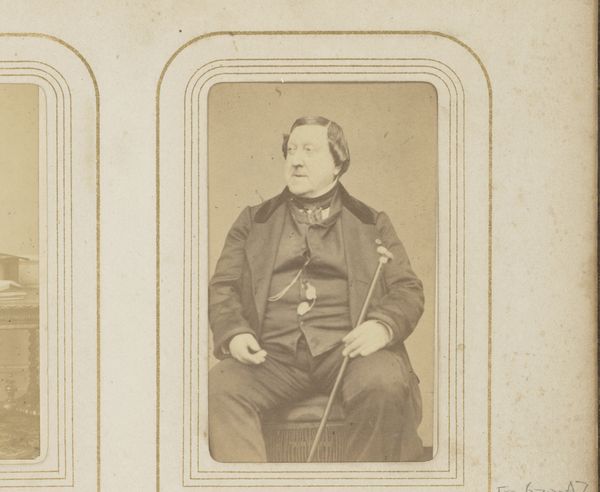
daguerreotype, photography
#
portrait
#
daguerreotype
#
photography
#
historical photography
#
19th century
#
realism
Dimensions: height 84 mm, width 51 mm
Copyright: Rijks Museum: Open Domain
Georges Mathurin Legé captured this portrait of C. Mouselet using the 19th-century photographic technique of albumen print. Albumen printing was one of the first commercially viable methods of producing a photographic print on paper, becoming incredibly popular for portraiture. It involved coating paper with albumen, or egg white, and then sensitizing it with silver nitrate. The paper was then exposed to light through a negative, resulting in a detailed image. The tones you see here, from the warm sepia, emerge from the reaction of silver salts with the albumen, producing an image of considerable detail and depth. The labor-intensive nature of albumen printing, from preparing the paper to carefully controlling the exposure, highlights the shift from handcrafted art to mass-produced images, capturing a moment in time for posterity. This shows a transition in photographic processes, embedding it within wider social and cultural practices. By appreciating these materials and processes, we gain insight into the cultural context.
Comments
No comments
Be the first to comment and join the conversation on the ultimate creative platform.
